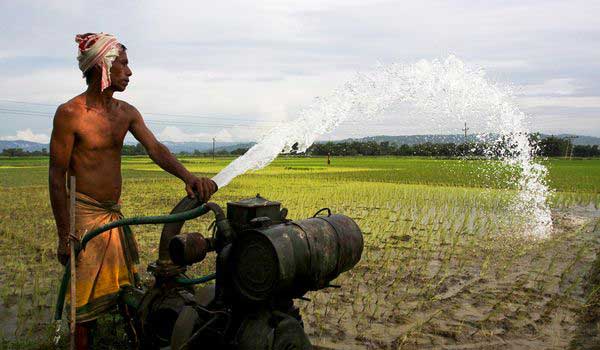
Being a agriculture dependent country, irrigation is the backbone of India. India is a vast country with a kaleidoscopic diversity if topography, climate and vegetation. The rainfall is generally capricious in its incidence and variable in amount. The distribution of water in India is therefore, very uneven. The rainfall in this country is concentrated usually during four months in a year when there is excess water which flows down unutilized, while in other seasons there is acute shortage of water.
The total of cultivable area in this country is about 185 million hectares. At present about 172 million hectares are under cultivation. Seventy percent of India’s vast population depends upon agriculture directly for their living, and therefore agriculture has always been and promises to remain the main industry of India in foreseeable future also. India has large water resources, great rivers systems and vast thirsty tracts of land and is thus designed, so to say by nature for the development of irrigation. This is why India has some of the earliest irrigation works.
However, even when full potential of available resources are developed, irrigation facilities can be extended to 115 million ha of which 80 million ha from surface water and 35 million ha from ground water. The gross cropped area is expected to increase to about 200 million ha during the next two decades due to introduction of multiple cropping and land reclamation.
There are various types of irrigation system practiced in India. Some of the systems are listed below:
- Well water irrigation system
Wells are abunduntly found in the states of U. P., Bihar, Tamil Nadu, etc. There are various types of wells like shallow wells, deep wells, tube wells, artesian wells, etc. Shallow wells water are not always available as the level of water goes down during the arid season. Deep well is more suitable as such type of well always has water irrespective of time. A deep tube well worked by electricity, can irrigate a much larger area (about 400 hectares) than a surface well (1/2 hectares).Tube-wells are also used for irrigation purposes. Tube wells can be installed and used near agricultural area where ground water is readily available. Tube wells are mostly used in states of U.P., Haryana, Punjab, Bihar and Gujarat. In Rajasthan and Maharashtra, artesian wells are now supplying water to agricultural lands. In artesian wells, water level remains at a high-level because of the natural flow of water due to high pressure.
- Reservoir water irrigation system
In near Hyderabad areas, water-reservoirs are made by constructing structures across the water bodies. Such structures are referred as dams. This system is greatly adopted in the States of Tamil Nadu, Andhra Pradesh, and Karnataka, etc. Even in Northern India , reservoirs of water are constructed for storing water. From all these reservoir, water is carried to the fields through canals.In many places, rain-water harvesting systems are installed and water is stored in large artificial reservoirs to be used for agricultural purposes.
- Canal irrigation system
Canal irrigation is playing a vital role in Indian agriculture. It covers near about 42% of total irrigated land. In many places during the rainy season, there is flood in the rivers. The flood water is carried to the field through canals. These canals are found in W.B., Bihar, Orissa, etc. They supply water only when there is flood in the rivers, and therefore, are of no use during the dry season when water is required most.
In Punjab, the upper Bari Doab canal connecting the Ravi and the Beas and Sirhind (from the Sutlej) canal is famous. In U.P., the Upper Ganga and the Lower Ganga canals, Agra and Sarda canals, etc. are important. In Tamil Nadu, most important are the Buckingham canal and the Periyar canal.
- Multi purpose river valley projects
In recent years, multi-purpose river valley projects are helping in irrigation and growth of agriculture. The most important river valley projects are:- Damodar Valley Project in West Bengal
- Mor (Mayurakshi) Project in West Bengal
- Mahanadi (Hirakud) Project in Orissa
- Koshi Project in Bihar
- Bhakra Nangal Project in Punjab
